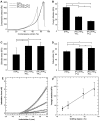Layer-by-Layer Assembly of Biopolyelectrolytes onto Thermo/pH-Responsive Micro/Nano-Gels
- PMID: 28788259
- PMCID: PMC5512647
- DOI: 10.3390/ma7117472
Layer-by-Layer Assembly of Biopolyelectrolytes onto Thermo/pH-Responsive Micro/Nano-Gels
Abstract
This review deals with the layer-by-layer (LbL) assembly of polyelectrolyte multilayers of biopolymers, polypeptides (i.e., poly-l-lysine/poly-l-glutamic acid) and polysaccharides (i.e., chitosan/dextran sulphate/sodium alginate), onto thermo- and/or pH-responsive micro- and nano-gels such as those based on synthetic poly(N-isopropylacrylamide) (PNIPAM) and poly(acrylic acid) (PAA) or biodegradable hyaluronic acid (HA) and dextran-hydroxyethyl methacrylate (DEX-HEMA). The synthesis of the ensembles and their characterization by way of various techniques is described. The morphology, hydrodynamic size, surface charge density, bilayer thickness, stability over time and mechanical properties of the systems are discussed. Further, the mechanisms of interaction between biopolymers and gels are analysed. Results demonstrate that the structure and properties of biocompatible multilayer films can be finely tuned by confinement onto stimuli-responsive gels, which thus provides new perspectives for biomedical applications, particularly in the controlled release of biomolecules, bio-sensors, gene delivery, tissue engineering and storage.
Keywords: biomedical applications; layer-by-layer; polyelectrolytes; polypeptides; polysaccharides; thermoresponsive gels.
Conflict of interest statement
The authors declare no conflict of interest.
Figures










 ) grafting degree. Reproduced with permission from [44], copyright 2012, American Chemical Society.
) grafting degree. Reproduced with permission from [44], copyright 2012, American Chemical Society.








References
-
- Decher G., Schmitt J. Fine-tuning of the film thickness of ultrathin multilayer films composed of consecutively alternating layers of anionic and cationic polyelectrolytes. Prog. Colloid Polym. Sci. 1992;89:160–164.
-
- Decher G. Fuzzy nanoassemblies: Toward layered polymeric multicomposites. Science. 1997;277:1232–1237. doi: 10.1126/science.277.5330.1232. - DOI
-
- Yoo D., Shiratori S.S., Rubner M.F. Controlling bilayer composition and surface wettability of sequentially adsorbed multilayers of weak polyelectrolytes. Macromolecules. 1998;31:4309–4318. doi: 10.1021/ma9800360. - DOI
-
- Dubas S.T., Schlenoff J.B. Factors controlling the growth of polyelectrolyte multilayers. Macromolecules. 1999;32:8153–8160. doi: 10.1021/ma981927a. - DOI
-
- Shiratori S.S., Rubner M.F. pH-dependent thickness behavior of sequentially adsorbed layers of weak polyelectrolytes. Macromolecules. 2000;33:4213–4219. doi: 10.1021/ma991645q. - DOI
Publication types
LinkOut - more resources
Full Text Sources
Other Literature Sources

